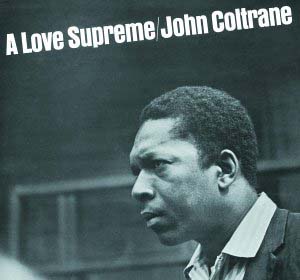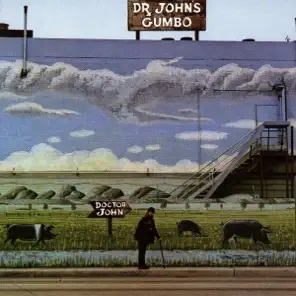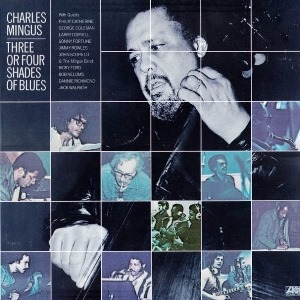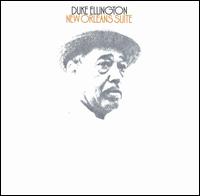
I Never Loved a Man the Way I Love You is the tenth studio album by American singer Aretha Franklin, released on March 10, 1967 by Atlantic Records. It was Franklin's first release under her contract with the label, following her departure from Columbia Records after nine unsuccessful jazz standard albums, and marked a commercial breakthrough for her, becoming her first top 10 album in the United States, reaching number 2 on the Billboard 200. Two singles were released to promote the album: "Respect" and "I Never Loved a Man ". The former topped the Billboard Hot 100, while latter reached the top 10.

The Band is the second studio album by the Canadian-American rock band the Band, released on September 22, 1969. It is also known as The Brown Album. According to Rob Bowman's liner notes for the 2000 reissue, The Band has been viewed as a concept album, with the songs focusing on people, places and traditions associated with an older version of Americana. Thus, the songs on this album draw on historic themes for "The Night They Drove Old Dixie Down", "King Harvest " and "Jawbone".

The Sun Sessions is a compilation album by American singer Elvis Presley, issued by RCA Records in 1976. The album contains Presley's earliest commercial recordings, made in Memphis, Tennessee for Sun Records in 1954 and 1955. RCA issued the album in the UK in 1975 under the title The Sun Collection. The album features liner notes by Roy Carr of the New Musical Express. The Sun Sessions features most of the tracks Elvis recorded for Sun Records and produced by Sam Phillips, the head of Sun Studios. The Sun Sessions reached number two on the Billboard Country Albums and number 1 on the Cashbox Country Albums charts.

Giant Steps is a studio album by jazz musician John Coltrane. It was released in February 1960 through Atlantic Records. This was Coltrane's first album as leader for the label, with which he had signed a new contract the previous year. The record is regarded as one of the most influential jazz albums of all time. Many of its tracks have become practice templates for jazz saxophonists. In 2004, it was one of fifty recordings chosen that year by the Library of Congress to be added to the National Recording Registry. It attained gold record status in 2018, having sold 500,000 copies.

A Love Supreme is an album by American jazz saxophonist John Coltrane. He recorded it in one session on December 9, 1964, at Van Gelder Studio in Englewood Cliffs, New Jersey, leading a quartet featuring pianist McCoy Tyner, bassist Jimmy Garrison and drummer Elvin Jones.

The Genius of Ray Charles is a 1959 Ray Charles album, released in October by Atlantic Records, the seventh album since the debut Ray Charles in 1957. The album consists of swinging pop with big band arrangements. It comprises a first half of big band songs and a second half of string-backed ballads. The Genius of Ray Charles sold fewer than 500,000 copies and charted at number 17 on the Billboard 200. "Let the Good Times Roll" and "Don't Let the Sun Catch You Cryin'" were released as singles in 1959.

Live at the Apollo is the first live album by James Brown and the Famous Flames, recorded at the Apollo Theater in Harlem in October 1962 and released in May 1963 by King Records. Capturing Brown's popular stage show for the first time on record, the album was a major commercial and critical success and cemented his status as a leading R&B star.

Sex Machine is a 1970 double album by James Brown. It showcases the playing of the original J.B.'s lineup featuring Bootsy and Catfish Collins, and includes an 11-minute rendition of the album's title song, different from the original recording of the title song which was released as a two-part single in 1970.

Live at the Regal is a 1965 live album by American blues guitarist and singer B.B. King. It was recorded on November 21, 1964, at the Regal Theater in Chicago. The album is widely heralded as one of the greatest blues albums ever recorded and was ranked at number 141 in Rolling Stone's 2003 edition of the 500 Greatest Albums of All Time list, before dropping to number 299 in a 2020 revision. In 2005, Live at the Regal was selected for permanent preservation in the National Recording Registry at the Library of Congress in the United States.

Dr. John's Gumbo released in 1972 is the fifth album by New Orleans singer and pianist Dr. John, a tribute to the music of his native city. The album is a collection of covers of New Orleans classics, played by a major figure in the city's music. It marked the beginning of Dr. John's transition away from the eccentric stage character that earned him a cult following, and toward a more straightforward image based on New Orleans' R&B traditions.

Al Green's Greatest Hits is a 1975 greatest hits release by soul singer Al Green. In 2003, the album was ranked number 52 on Rolling Stone magazine's list of the 500 greatest albums of all time, maintaining the rating in a 2012 revised list. The album's ranking dropped to number 456 in the 2020 revised list. The compilation has consistently ranked as one of the best executed 'greatest hits' albums in history. The album peaked at No. 3 on the Billboard Top Soul LPs chart and No. 17 on the Top LPs chart.

"Tipitina" is a song written and made famous by Professor Longhair. The song has been widely covered and the Professor Longhair version was recorded in 1953 for Atlantic Records. "Tipitina" was first released in 1953. A previously unreleased alternate take was released on the album New Orleans Piano in 1972. Although the nature of his contributions are unknown, recording engineer Cosimo Matassa is listed as the song's co-writer along with Roy Byrd, Professor Longhair's legal name.

The Last Trane is an album credited to jazz musician John Coltrane, released in 1966 on Prestige Records, catalogue 7378.

My Point of View is the second album by pianist Herbie Hancock. It was released in 1963 on Blue Note Records as BLP 4126 and BST 84126. Musicians featured are trumpeter Donald Byrd, trombonist Grachan Moncur III, tenor saxophonist Hank Mobley, guitarist Grant Green, bassist Chuck Israels and drummer Tony Williams.

Guess Who is a studio album by B. B. King. It was released in 1972 by ABC Records.

Crawfish Fiesta is an album by Professor Longhair, released in 1980 by Alligator Records. It features Dr. John, who reprised his original role as guitarist in Longhair's band, Johnny Vidacovich on drums, Tony Dagradi and Andrew Kaslow on sax, and Longhair's long time conga player Alfred "Uganda" Roberts. The album was recorded at the Sea-Saint Studios in New Orleans and it was co-produced by Kaslow, his wife Allison and Bruce Iglauer. It won the first W.C. Handy Blues Album of the Year award in 1980.

Three or Four Shades of Blues is a studio album by the American jazz bassist and bandleader Charles Mingus. It was recorded in sessions held on March 9 and 11, 1977, at New York City's Atlantic Studios, and on March 29 at the Record Plant in Los Angeles. The album features two new versions of Mingus's "standards" and three new compositions performed by large ensembles featuring saxophonists Ricky Ford, George Coleman, and Sonny Fortune, pianist Jimmy Rowles, guitarists Larry Coryell, Philip Catherine and John Scofield, bassists Ron Carter and George Mraz, trumpeter Jack Walrath, and drummer Dannie Richmond.

Don't Stop the Carnival is a live album by jazz saxophonist Sonny Rollins, recorded at the Great American Music Hall and released on the Milestone label in 1978, featuring performances by Rollins with Mark Soskin, Aurell Ray, Jerome Harris and Tony Williams with Donald Byrd joining on five tracks.

New Orleans Suite is a studio album by the American pianist, composer, and bandleader Duke Ellington, recorded and released on the Atlantic label in 1970. The album contains the final recordings of longtime Ellington saxophonist Johnny Hodges, who died between the album's two recording sessions. The album won a Grammy Award in 1971 for Best Jazz Performance by a Big Band.

House Party New Orleans Style is a compilation album by the American musician Professor Longhair, released in 1987. The tracks were originally intended for Atlantic Records; the recording sessions were among Professor Longhair's first after his live performing comeback in the early 1970s.




















